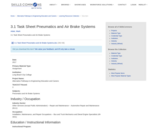
Pneumatics and air brake sysems worksheet.
- Subject:
- Automotive Technology and Repair
- Career and Technical Education
- Material Type:
- Activity/Lab
- Provider:
- Skills Commons
- Author:
- Mark Adair
- Date Added:
- 08/17/2022

Pneumatics and air brake sysems worksheet.
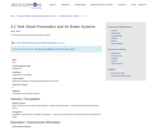
Questions regarding air brake systems.

Pneumatic and air brake systems worksheet.
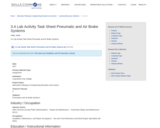
Pneumatic and air brake systems worksheet.

Pneumatic and air brake systems worksheet.
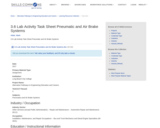
Pneumatic and air brake systems worksheet.
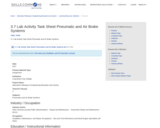
Pneumatic and air brake worksheet.

Textbook chapter used in CSI EDUC 204 Families, Communities, and Culture.

Students and professionals in science, design and technology have to develop and communicate concepts that are often difficult to comprehend for the public, their peers and even themselves.
IMAGE | ABILITY – Visualizing the Unimaginable, will help you enhance your communication and interpersonal skills and provide insight, tips and tricks to make such complex and seemingly unimaginable concepts and ideas imaginable.
After finishing this course you will be more skilled in finding the right visual language to convey your ideas, thoughts and vision. You will be able to illustrate units and quantities, concepts and themes and you will know how to unravel complexity by using diagrams and schemes.
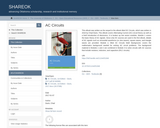
This eBook was written as the sequel to the eBook titled DC Circuits, which was written in 2016 by Chad Davis.
This eBook covers Alternating Current (AC) circuit theory as well us a brief introduction of electronics. It is
broken up into seven modules. Module 1 covers the basic theory of AC signals. Since only DC sources are used in
the first eBook, details of AC signals such as sinusoidal waveforms (or sine waves), square waves, and triangle
waves are provided. Module 2, titled AC Circuits Math Background, covers the mathematics background needed
for solving AC circuit problems. The background material in Modules 1 and 2 are combined in Module 3 to solve
circuits with AC sources that include resistors, inductors, and capacitors (RLC circuits).

Welcome to the AC Electrical Circuit Analysis, an open educational resource (OER). The goal of this text is to introduce the theory and practical application of analysis of AC electrical circuits. It assumes familiarity with DC circuit analysis. If you have not studied DC circuit analysis, it is strongly recommended that you read the companion OER text, DC Electrical Circuit Analysis before continuing. Both texts are offered free of charge under a Creative Commons non-commercial, share-alike with attribution license. For your convenience, along with the free pdf and odt files, print copies are available at a very modest charge. Check my web sites for links.

The ACS (American Chemical Society) citation style guide uses color-coded citation examples to assist chemistry students in converting MLA and APA citations to the ACS citation style. The MLA and APA citation styles are widely used in college courses, and many students are familiar with those styles. This guide makes citation in chemistry courses simple by giving examples of frequently referenced resources.

An introduction to the ADDIE model.
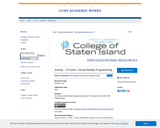
An A-Frame Virtual Reality Programming activity for CS0 students. Part of the CUNY CS04All project.
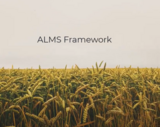
The ALMS Framework provides a way to consider how technical choices impact the ability to engage in the 5R activities associated with OER (Open Educational Resources). This video outlines key technical considerations addressed through ALMS Framework when planning an OER project.

This OER is a free alternative to expensive Introduction to Cultural Anthropology textbooks. It includes a full textbook and several original videos, 10 "challenges" (assignments), a hub of original and found resources for teaching and learning anthropology, a “connected course” of many faculty around the world sharing instructional materials, an open course freely available to anyone online, and an emerging producer of original anthropological videos and other digital content.
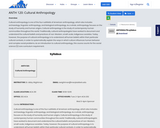
The syllabus for ANTH 120: Cultural Anthropology, taught at Mary Baldwin University by Dr. Abigail Wightman, PhD.
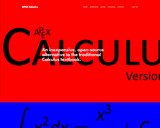
APEX Calculus is a calculus textbook written for traditional college/university calculus courses. It has the look and feel of the calculus book you likely use right now (Stewart, Thomas & Finney, etc.). The explanations of new concepts is clear, written for someone who does not yet know calculus. Each section ends with an exercise set with ample problems to practice & test skills (odd answers are in the back).
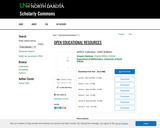
This text comprises a three–volume series on Calculus. The first part covers material taught in many “Calculus 1” courses: limits, derivatives, and the basics of integration, found in Chapters 1 through 6. The second text covers material often taught in “Calculus 2”: integration and its applications, along with an introduction to sequences, series and Taylor Polynomials, found in Chapters 7 through 10. The third text covers topics common in “Calculus 3” or “Multivariable Calculus”: parametric equations, polar coordinates, vector–valued functions, and functions of more than one variable, found in Chapters 11 through 15. All three are available separately for free.
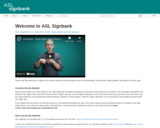
ASL Signbank is a collection of ASL signs linked with ID glosses.